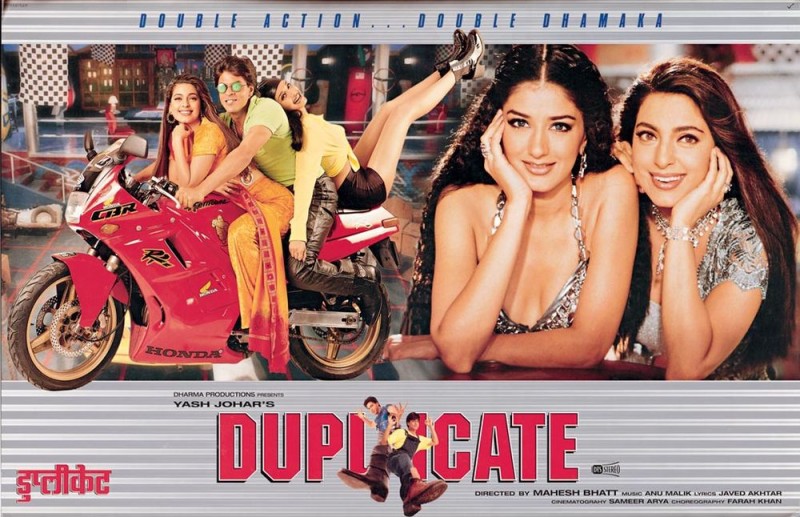
Bollywood, the Indian film industry, has a rich and distinguished history of making films that push the limits of imagination and inventiveness. Shah Rukh Khan, one of the most recognisable actors in Indian cinema, starred in "Duplicate," a 1998 release that not only wowed viewers with a compelling plot but also created history with its avant-garde special effects. Shah Rukh Khan stated in an interview that the special effects in "Duplicate" were a first for Bollywood and that they introduced a completely new way of doing double roles on screen. This article examines the importance of this technological development and how the Indian film industry was affected by it.
Prior to exploring the inventive special effects in "Duplicate," it's critical to comprehend the background of Indian special effects historically. The Indian film industry has a long history of imaginative storytelling, and to improve the visual appeal of their films, they frequently use practical effects like matte paintings, miniatures, and basic camera tricks. Innovative methods were used by early Indian filmmakers to captivate audiences in the absence of contemporary technology.
Bollywood special effects artists kept up with technological advancements. Filmmakers experimented with different techniques to create visually stunning sequences, starting with the first Indian film, "Raja Harishchandra" (1913), and continuing with classics like "Mughal-e-Azam" (1960). Still, the interaction between the two characters played by a single actor was limited because the portrayal of double roles frequently relied on crude techniques like split screens and body doubles.
"Duplicate" was a major turning point in the history of special effects in Indian cinema when it was released in 1998. Playing the roles of Manu Dada and Bablu Chaudhary, Shah Rukh Khan, who was already regarded as one of Bollywood's most versatile actors, was given a dual role. But it was the on-screen interaction between these two characters—made possible by state-of-the-art special effects—that really set "Duplicate" apart.
Shah Rukh Khan proudly revealed in a media interview that "Duplicate" had invented a ground-breaking method that went beyond the traditional split screen strategy. In order to make the double roles appear more seamless and natural and to allow them to share the same frame more closely, the movie made use of cutting-edge filmmaking technology. This breakthrough not only stunned the viewers but also raised the bar for Indian filmmaking.
It's crucial to go into the specifics of the filmmaking process in order to comprehend the technology that made "Duplicate" a game-changer. The movie created the appearance of two Shah Rukh Khans sharing a frame and interacting with each other by combining motion control, blue screen technology, and computer-generated imagery (CGI).
Blue Screen Technology: Shah Rukh Khan performed two separate roles in the same scene against a blue background while the scene was filmed twice using blue screen technology. In post-production, it was simple to distinguish the actors from the background thanks to the blue screen.
Motion Control: Motion control rigs were used to guarantee exact alignment and coordination of movements between the two characters. When the scenes were combined, the camera could replicate the exact same movement thanks to these rigs, resulting in a fluid visual flow.
Computer-Generated Imagery (CGI): To combine the two different images into one frame, CGI was utilised. Thanks to technological advancements, the filmmakers were able to manipulate the images and create the convincing illusion that the two characters were standing behind each other or engaging in dialogue.
There were difficulties encountered during the "Duplicate" production. To guarantee that the two Shah Rukh Khans acted in perfect sync, the filmmakers had to carefully prepare and carry out each scene involving the double roles. To reach the appropriate degree of realism, the procedure necessitated a complex choreography of gestures, expressions, and conversations.
"Duplicate" achieved a lot, one of which was to make the interactions between the two characters seem effortless and natural. By going well beyond the conventional split-screen method and providing a far more engaging and visually appealing experience for the audience, the technology used in the movie raised the bar for how double roles are portrayed in Bollywood.
"Duplicate" had a significant and wide-ranging effect on Indian cinema. It proved that Indian filmmakers could compete on a global level in terms of special effects and technological innovation, and it was a turning point in the history of the industry. A more advanced degree of visual effects and storytelling had now been adopted by the film industry.
Bollywood filmmakers to come after "Duplicate" found inspiration in it. More special effects experimentation was made possible by it, and the industry was encouraged to embrace technological advancements and push creative boundaries. The result was the rise of a new generation of Bollywood films that improved storytelling by using computer-generated imagery and state-of-the-art visual effects.
In addition to being a technological marvel that revolutionised Indian cinema, Shah Rukh Khan's "Duplicate" was more than just another Bollywood movie. The double roles in the movie interacted fluidly and convincingly thanks to the creative use of motion control, CGI, and blue screen technology, which raised the bar for how many characters one actor can portray. This historic accomplishment had a long-lasting effect on Indian cinema, encouraging directors to push the boundaries of storytelling and special effects.
"Duplicate" demonstrated how the Indian film industry is always changing and how it can keep up with the most recent technological developments in the filmmaking field. The legacy of "Duplicate" endures as a testament to Bollywood's dedication to pushing the limits of innovation and creativity, even as the industry pursues perfection.
The Hollywood Inspiration Behind Bollywood's Classic
Juhi Chawla's Bold Step into Grey Shades with 'Arjun Pandit'
Nusrat Bharucha narrates the story of Israel's eyes, video goes viral